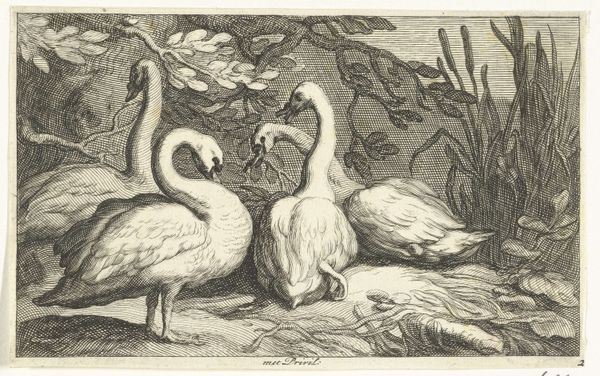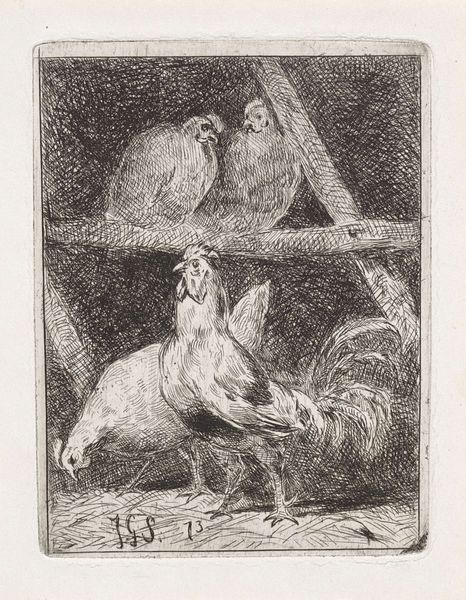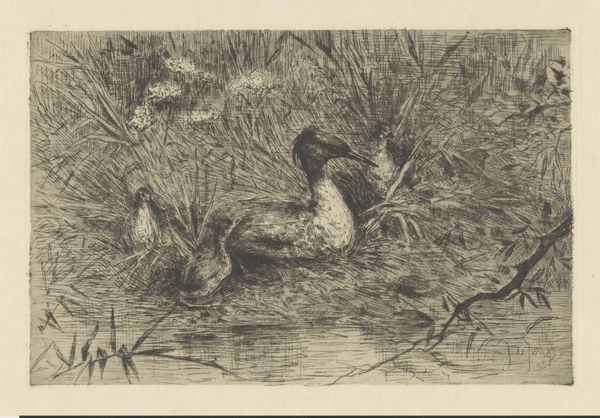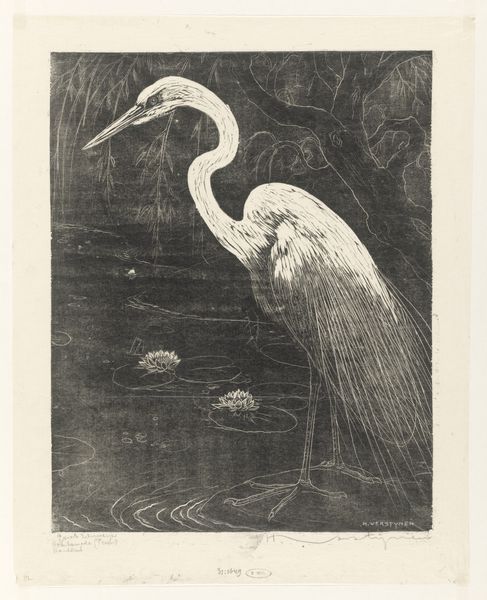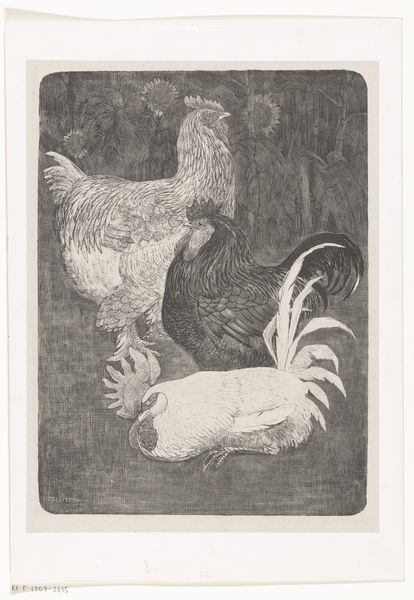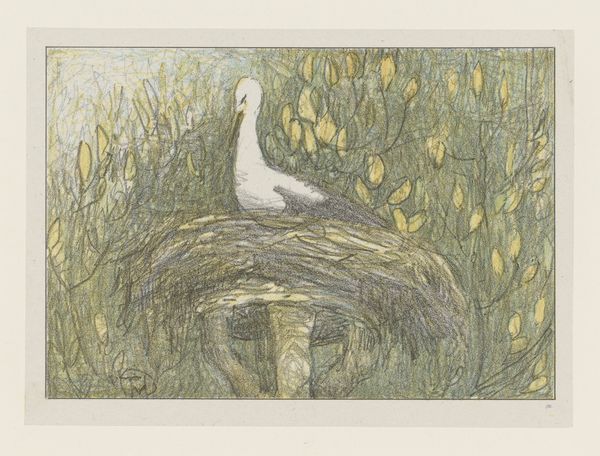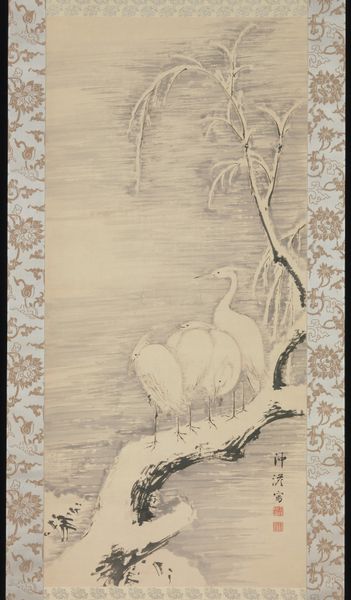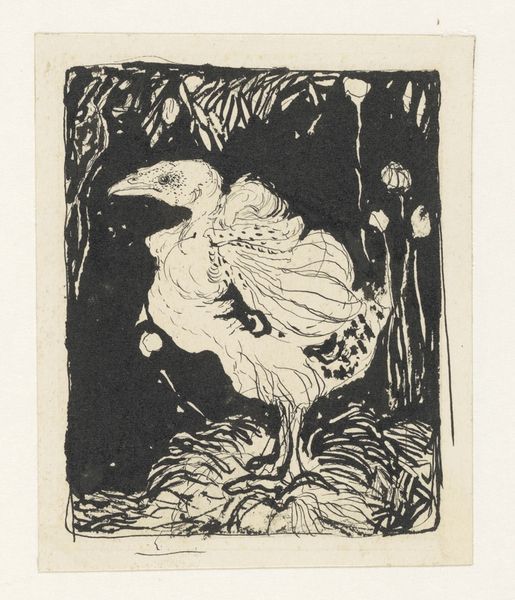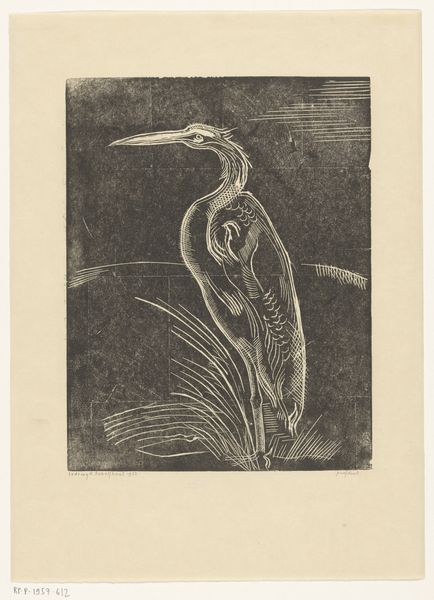
Dimensions: height 222 mm, width 168 mm, height 425 mm, width 302 mm
Copyright: Rijks Museum: Open Domain
Editor: We are looking at "Six Cranes by the Waterside," a pencil drawing made sometime between 1878 and 1910 by Theo van Hoytema, housed here at the Rijksmuseum. It strikes me as both delicate and somewhat melancholy. What do you see in this piece? Curator: Melancholy… I like that. It feels true, doesn't it? Almost like we’ve stumbled upon these birds at twilight, or perhaps caught them in a moment of quiet contemplation before a storm. Hoytema has captured something really special with so few lines, hasn't he? You know, it reminds me of whispers of ukiyo-e, that fleeting world captured in Japanese prints, with its focus on nature, like Hokusai’s birds... Tell me, does it call to mind other artworks you know? Editor: Yes, now that you mention it, I can definitely see the ukiyo-e influence. Maybe it's the simple lines and the focus on nature. I wouldn't have caught that otherwise! So, is it all about capturing a single moment in nature? Curator: In part, perhaps. But Hoytema offers a mood—more than just objective observation. He almost anthropomorphizes the Cranes. You can feel the loneliness... the collective introspection within this selected "family" of birds. And do you notice the limited use of pencil? A symphony of grays that hearken to an overcast morning! Do you get that feeling as well? Editor: Yes! The muted palette definitely contributes to the melancholic feeling. It is really cool how Hoytema manages to evoke that. Curator: Precisely. It is a quiet masterpiece—understated, reflective. What do you take away from it now? Editor: That even a seemingly simple drawing of birds can be deeply evocative, full of emotion and cultural echoes, thanks to skillful observation, technique, and perspective. Curator: Indeed. There's something incredibly human in the way he’s rendered these cranes, isn't there? It makes you wonder what stories they hold within their feathered breasts, if they have families of their own and struggles and hardships... food for thought if there ever was!
Comments
No comments
Be the first to comment and join the conversation on the ultimate creative platform.


